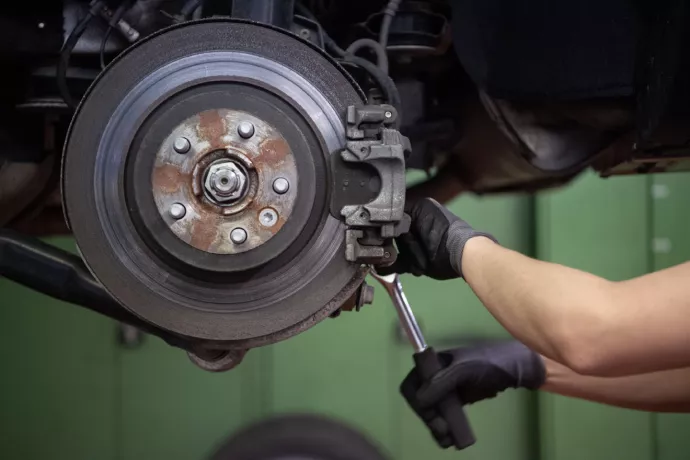
Heavy metals and microplastics: U of T researchers tackling air pollution from vehicle brakes and tires
With the increasing popularity of electric vehicles, car-related air pollution will be less of a concern, right? Think again, says a group of University of Toronto researchers who are studying the effects of air pollution from brakes, tires and other non-tailpipe emissions.
EVs do well to nearly eliminate sources of tailpipe emissions like CO2, but there are additional sources of air pollution stemming from the vehicle’s parts that can impact human health.
In 2022, Canada saw more electric vehicles hit the roads, and the federal government has set targets of complete EV adoption by 2035.
While the push to EVs help reduce tailpipe emissions, also known as emissions from fossil fuels, even swapping every vehicle on the roadway to an EV won’t eliminate all the sources of air pollution, U of T researchers say.
It’s because brake pads, rotors and tires grind down over time and erode. This results in tons of particulate matter like heavy metals and microplastics polluting the air.
“Millions of tires being driven on the road breaking down, that’s a problem,” says UTM assistant professor of geography, geomatics and environment Matt Adams. “It’s an emerging question in the field: it’s hard to know where the particles end up.”

Adams and Greg Evans, professor of chemical engineering and applied chemistry at U of T, says the source of the pollution has shifted.
“Because of changes in vehicle technology, tailpipe emissions particularly from cars has dropped off a lot over the last two decades,” Evans says. “What we found with research we’ve done in Toronto is since 2013, non-tailpipe emissions have exceeded tailpipe emissions.”
While tires are made from a combination of plastics and rubber, brakes are made of heavy metals, including iron, barium and copper.
Particles of heavy metals, microplastics, and micro rubber from tires and brakes pollute the air and can contribute to a range of negative health outcomes. Some heavy metals like copper can cause oxidative stress when inhaled. Lungs suffer from inflammation and an immune response is triggered.
“There is not an organ in your body that’s not impacted by air pollution,” Adams says. “We know your health risk is increased, we know a lot of these pollutants are carcinogens, can contribute to cardiorespiratory issues.”
Evans and Adams are part of the team of U of T researchers conducting a three-year study to learn more about tailpipe vs. non-tailpipe emissions. The study is for a U.S.-based organization called the Health Effects Institute which gathers research on the effects of air pollution.
“At the end of it, we’re hoping to have better methods to able say how much is coming from tailpipe and how much is non-tailpipe, and how do we identify hot spots,” Evans says.
Researchers include U of T professors Marianne Hatzopoulou, Arthur Chan, Meredith Franklin, McGill University’s Scott Weichenthal and University of Barcelona visiting professor Maria Pérez.
The results of the study could potentially result in regulations for tire and brake emissions, as is the case in the European Union. In late 2022, the EU proposed new Euro 7 standards to reduce vehicle emissions and improve air quality. The new proposals were the first worldwide emissions standards to set additional limits for emissions from tires and brakes.
It’s not just regulations. Adams says there are additional considerations when switching over to EVs, including the source of electric power, lithium sourcing, and infrastructure.
“We’re trying to translate the links of how and where you are in the urban environment to your exposure [to air pollution], and then using that to plan cities better for our health,” Adams says.
Planning more healthy cities means building urban areas where people can walk, cycle, and take public transit on top of adopting EVs.
“Air pollution is tricky. It’s invisible for the most part, we don’t smell it. We’re trying to quantify the intangible for the average person,” he says.

